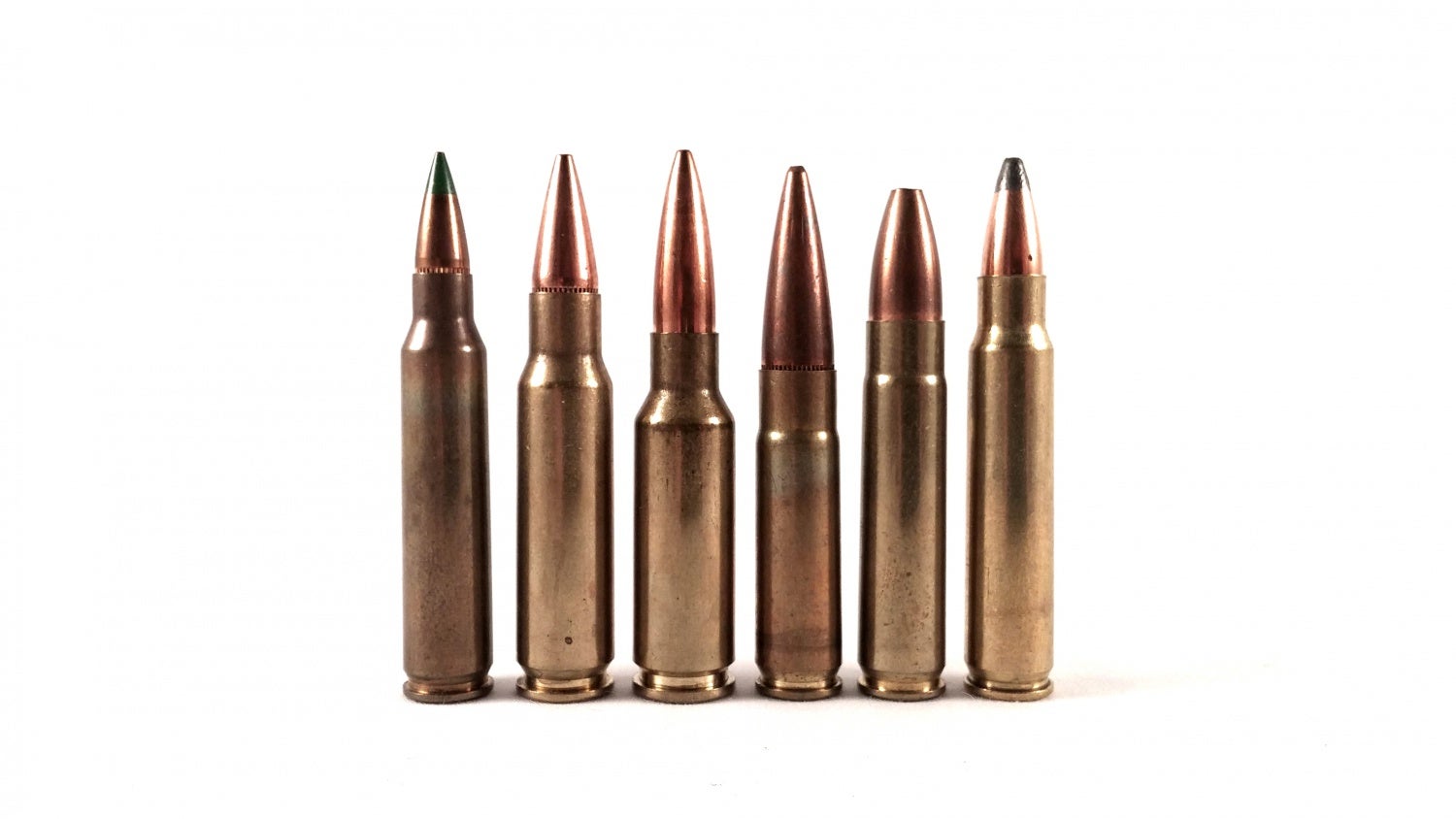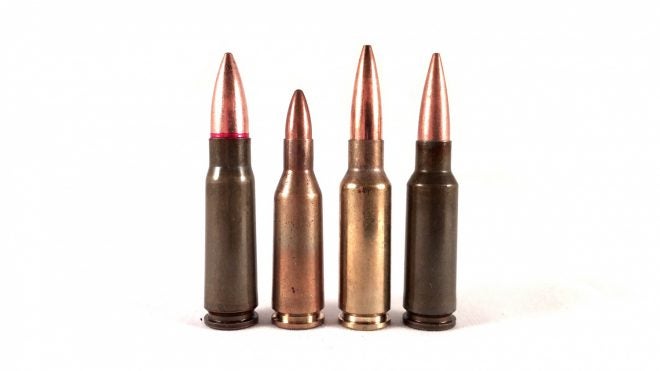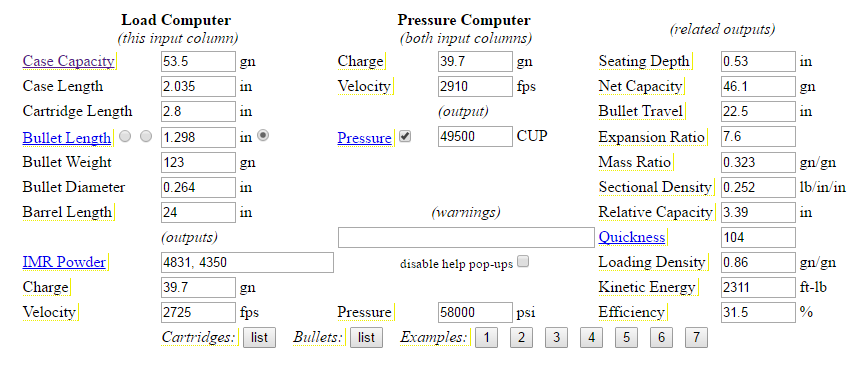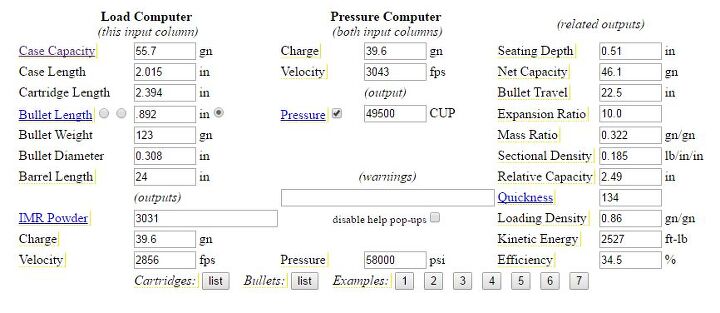Probably the most obvious element of ammunition design is the choice of caliber, or more specifically the choice of bore and bullet diameter. These two dimensions are of course closely linked in conventional ammunition systems (they can be decoupled with sabots, but those are outside the scope of this series), and together they relate to some of the most central trade-offs of any ammunition system design.
Simply, one may choose either a larger or a smaller bullet/bore diameter, with different consequences for either. With larger bore diameters:
- Bullet mass, for a given scaled projectile design, will be higher.
- Swept volume in the bore, for a given barrel length, will be greater.
Whereas, with smaller bore diameters:
- Muzzle velocity, for a given scaled projectile design, will be higher.
- Cartridge weight, for a given scaled projectile design, will be lower.
Therefore, smaller diameters are – all things being equal – better if low cartridge weight and higher muzzle velocity are more valuable for the purpose than projectile mass or swept volume. While we’ll discuss it more in depth later when it gets its own article, a high muzzle velocity is valuable if a flat trajectory and low aiming error are needed.
This is why we see relatively small bore and bullet diameters (for the size of the round) in most modern military small arms cartridges, as well as in long range precision rifle cartridges, and varminting rounds. In each case, a high muzzle velocity helps reduce the inaccuracy caused by elevation and windage errors made by the shooter. As well, in military rifle cartridges, ammunition weight is at a premium, so bore diameter is ideally kept to the minimum, so long as all necessary requirements are met.

Most modern military rifle rounds have a relatively low projectile diameter to case capacity ratio, as they need to provide flat-shooting characteristics with low ammunition weight. However, in recent years there have been significant exceptions, like the .300 Blackout shown here, third from right.
In contrast, where bullet mass and swept volume are higher priorities (and, it is implied, where trajectory and ammunition weight are not), we see rounds with very fat, wide bores and large projectiles. In African big game rifles, which may at best only shoot a handful of rounds in an entire hunting trip, and which need high bullet mass and large bullet size to reliably tackle dangerous continental game, we see the opposite of what we get with long range precision rifles. Short, fat bullets coupled with only relatively modest case capacities (for the caliber) are the rule of the day.
Here we see the effect of increasing the bullet and bore diameter on performance. Below are two Powley sheets for the .260 Remington and .308 Winchester, both using the same weight bullet (123gr). Both bullets have been seated to give the same effective case capacity, so that the only difference between the two rounds from an ignition standpoint is their bore and bullet diameters. We see that the .308 Winchester produces 9.3% more muzzle energy and is three percentage points more efficient than the .260, even though both rounds have essentially the same propellant load and case capacity, and are fired from the same barrel lengths:
Swept volume is valued for short barreled rifles, as well. Wider bores allow the propellant gases to expand more within a shorter length of barrel, allowing the gas to impart its energy to the projectile more completely within this short length. This is why the .300 Blackout and Russian 9x39mm calibers use such wide projectiles for their case capacities, and it’s why the former round can produce the same muzzle energy from a 10.5″ barrel as can a 5.56mm from a 14.5″ barrel, despite using only three-quarters as much propellant! As well, a greater swept volume to propellant mass ratio alleviates heat flux significantly, a subject covered more in-depth in another post I have written.
Next up, we take a look at the trade-offs involved in selecting different bullet weights. Stay tuned.
Disclaimer: I cannot within the span of an article of this size cover every single trade-off involved in each “axis” of design. My hope is that by the time the series is done, most of the major trade-offs will be covered. Please be patient with me 🙂
 Your Privacy Choices
Your Privacy Choices


